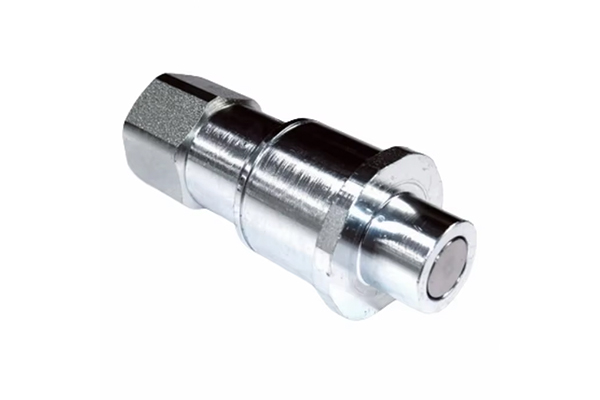How to ensure long-term stable operation of bobcat multi-way valve fast in frequent switching and high-pressure fluid environment?
Release Time : 2024-12-05
To ensure long-term stable operation of bobcat multi-way valve fast in frequent switching and high-pressure fluid environment, it is necessary to comprehensively consider multiple aspects such as design, material selection, manufacturing process, installation and maintenance.
Design optimization:
Structural design: Adopt compact and reasonable structural design to reduce the resistance of fluid flow and reduce wear. The channel layout of the multi-way valve should be as symmetrical as possible to balance the fluid pressure.
Seal design: Adopt multi-stage seal or elastic seal design to ensure good sealing performance under high pressure. Common sealing materials include PTFE (polytetrafluoroethylene), NBR (nitrile rubber), etc.
Material selection:
Valve body material: Select high-strength, high-pressure resistant and corrosion-resistant materials, such as stainless steel, titanium alloy, etc., to withstand the mechanical stress caused by high-pressure fluid and frequent switching.
Seal material: Use wear-resistant, high-temperature resistant and chemically resistant sealing materials to ensure sealing performance under high-pressure environment.
Manufacturing process:
Precision machining: Ensure the manufacturing accuracy of the valve body and valve core, use advanced CNC machining technology and surface treatment technology to improve the wear resistance and sealing of parts.
Heat treatment: Perform proper heat treatment on key components to improve their hardness and fatigue resistance.
Lubrication and cooling:
Lubrication system: Design an efficient lubrication system to ensure that the valve core and valve seat can be fully lubricated during frequent switching to reduce wear.
Cooling design: Under high pressure and frequent switching, the valve body and seals may generate a lot of heat. Design a cooling system or use materials with good heat dissipation performance to ensure that the valve body will not be damaged due to overheating.
Installation and maintenance:
Proper installation: Perform correct installation according to the manufacturer's instructions to ensure that the valve is tightly connected to the pipeline to avoid leakage. Use appropriate gaskets and sealants.
Regular maintenance: Regularly check the operating status of the valve and replace worn seals and lubricants. Perform pressure tests regularly to ensure the safe operation of the valve under high pressure environments.
Control system:
Intelligent monitoring: The intelligent control system is used to monitor the working status of the valve in real time, record the number of operations and pressure changes, and promptly warn of possible problems.
Fault diagnosis: The integrated fault diagnosis system can quickly identify and locate the fault point of the valve and reduce downtime.
Through the above measures, the bobcat multi-way valve fast can achieve long-term stable operation in frequent switching and high-pressure fluid environments, ensuring the reliability and safety of the system. Manufacturers and users should work closely to ensure that every link from design, manufacturing, installation to maintenance meets high standards to maximize the service life of the valve.
Design optimization:
Structural design: Adopt compact and reasonable structural design to reduce the resistance of fluid flow and reduce wear. The channel layout of the multi-way valve should be as symmetrical as possible to balance the fluid pressure.
Seal design: Adopt multi-stage seal or elastic seal design to ensure good sealing performance under high pressure. Common sealing materials include PTFE (polytetrafluoroethylene), NBR (nitrile rubber), etc.
Material selection:
Valve body material: Select high-strength, high-pressure resistant and corrosion-resistant materials, such as stainless steel, titanium alloy, etc., to withstand the mechanical stress caused by high-pressure fluid and frequent switching.
Seal material: Use wear-resistant, high-temperature resistant and chemically resistant sealing materials to ensure sealing performance under high-pressure environment.
Manufacturing process:
Precision machining: Ensure the manufacturing accuracy of the valve body and valve core, use advanced CNC machining technology and surface treatment technology to improve the wear resistance and sealing of parts.
Heat treatment: Perform proper heat treatment on key components to improve their hardness and fatigue resistance.
Lubrication and cooling:
Lubrication system: Design an efficient lubrication system to ensure that the valve core and valve seat can be fully lubricated during frequent switching to reduce wear.
Cooling design: Under high pressure and frequent switching, the valve body and seals may generate a lot of heat. Design a cooling system or use materials with good heat dissipation performance to ensure that the valve body will not be damaged due to overheating.
Installation and maintenance:
Proper installation: Perform correct installation according to the manufacturer's instructions to ensure that the valve is tightly connected to the pipeline to avoid leakage. Use appropriate gaskets and sealants.
Regular maintenance: Regularly check the operating status of the valve and replace worn seals and lubricants. Perform pressure tests regularly to ensure the safe operation of the valve under high pressure environments.
Control system:
Intelligent monitoring: The intelligent control system is used to monitor the working status of the valve in real time, record the number of operations and pressure changes, and promptly warn of possible problems.
Fault diagnosis: The integrated fault diagnosis system can quickly identify and locate the fault point of the valve and reduce downtime.
Through the above measures, the bobcat multi-way valve fast can achieve long-term stable operation in frequent switching and high-pressure fluid environments, ensuring the reliability and safety of the system. Manufacturers and users should work closely to ensure that every link from design, manufacturing, installation to maintenance meets high standards to maximize the service life of the valve.







